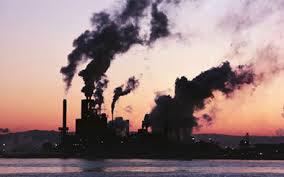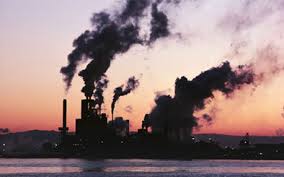
As a part of the effort to reduce air pollution in the 28 member States, the European Parliament Environment Committee is all set to enforce tougher new national caps on air pollutants. The new caps would be tougher than those proposed to be imposed by the European Commission.
Majority of the MEPs at the European Parliament Environment Committee voted in favor of the draft report, named "Reduction of national emissions of certain atmospheric pollutants", that was presented by Julie Girling. The key issues, according to the draft proposal, are the regulation of ammonia and methane and setting the ambition level for national emission reductions for 2020, 2025 and 2030.
After the voting the MEPs at the European parliament would work to formulate the National Emissions Ceilings law that would set the national emission levels for various Member States of the EU for the years 2020, 2025 and 2030, in line with the draft by Julie Girling. All the 28 Member States would be bound by the new law.
More than 400,000 premature deaths are reportedly caused by air pollution in the European Union every year in addition to health-related damages between €300 billion and €940 billion every year.
“The new NEC directive is the opportunity to tackle this important health issue, by putting in place the benchmarks for Member States to work towards. We cannot underestimate the benefits that would result from cleaning up the air we breathe,” said MEP Julie Girling. Her draft was voted in favor by 38 members with 28 opposing it while 2 MEPs remained absent.
The committee is now working to fix the levels of cap for national emission of six main air pollutants that include sulphur dioxide, particulate matter and nitrogen oxides. The committee predicts that more than €40 billion in air pollution costs would be saved by the year 2030 after the national caps are enforced.
All the 28 Member States of the EU would have to meet the cap level as proposed by the committee.
The cap level would be applicable for harmful air pollutants that include sulphur dioxide (SO2), nitrogen oxides (NOx), non-methane volatile organic compounds (NMVOC), methane (CH4) ammonia (NH3), and particulate matter (PM2.5). Apart from this the committee also wants to include a cap on levels of Mercury emission by 2020.
The EU statistics show that 62 percent of the EU area was exposed to eutrophication, including 71 percent of Natura 2000 protected ecosystems, according to the data available till 2010.
The economic impact from air pollution, according to the EU is also huge. €15 billion is the average annual cost from the lost workdays due to sickness related to air pollution, €4 billion is the cost to healthcare related directly due to air pollution, crop yield losses amount to €3 billion and €1 billion is lost due to damage to buildings.
Louise Duprez, senior policy officer for air quality at the European Environmental Bureau believes that the passing of the draft was good news for all of Europe’s citizens.
(Source: http://ens-newswire.com)
Majority of the MEPs at the European Parliament Environment Committee voted in favor of the draft report, named "Reduction of national emissions of certain atmospheric pollutants", that was presented by Julie Girling. The key issues, according to the draft proposal, are the regulation of ammonia and methane and setting the ambition level for national emission reductions for 2020, 2025 and 2030.
After the voting the MEPs at the European parliament would work to formulate the National Emissions Ceilings law that would set the national emission levels for various Member States of the EU for the years 2020, 2025 and 2030, in line with the draft by Julie Girling. All the 28 Member States would be bound by the new law.
More than 400,000 premature deaths are reportedly caused by air pollution in the European Union every year in addition to health-related damages between €300 billion and €940 billion every year.
“The new NEC directive is the opportunity to tackle this important health issue, by putting in place the benchmarks for Member States to work towards. We cannot underestimate the benefits that would result from cleaning up the air we breathe,” said MEP Julie Girling. Her draft was voted in favor by 38 members with 28 opposing it while 2 MEPs remained absent.
The committee is now working to fix the levels of cap for national emission of six main air pollutants that include sulphur dioxide, particulate matter and nitrogen oxides. The committee predicts that more than €40 billion in air pollution costs would be saved by the year 2030 after the national caps are enforced.
All the 28 Member States of the EU would have to meet the cap level as proposed by the committee.
The cap level would be applicable for harmful air pollutants that include sulphur dioxide (SO2), nitrogen oxides (NOx), non-methane volatile organic compounds (NMVOC), methane (CH4) ammonia (NH3), and particulate matter (PM2.5). Apart from this the committee also wants to include a cap on levels of Mercury emission by 2020.
The EU statistics show that 62 percent of the EU area was exposed to eutrophication, including 71 percent of Natura 2000 protected ecosystems, according to the data available till 2010.
The economic impact from air pollution, according to the EU is also huge. €15 billion is the average annual cost from the lost workdays due to sickness related to air pollution, €4 billion is the cost to healthcare related directly due to air pollution, crop yield losses amount to €3 billion and €1 billion is lost due to damage to buildings.
Louise Duprez, senior policy officer for air quality at the European Environmental Bureau believes that the passing of the draft was good news for all of Europe’s citizens.
(Source: http://ens-newswire.com)





